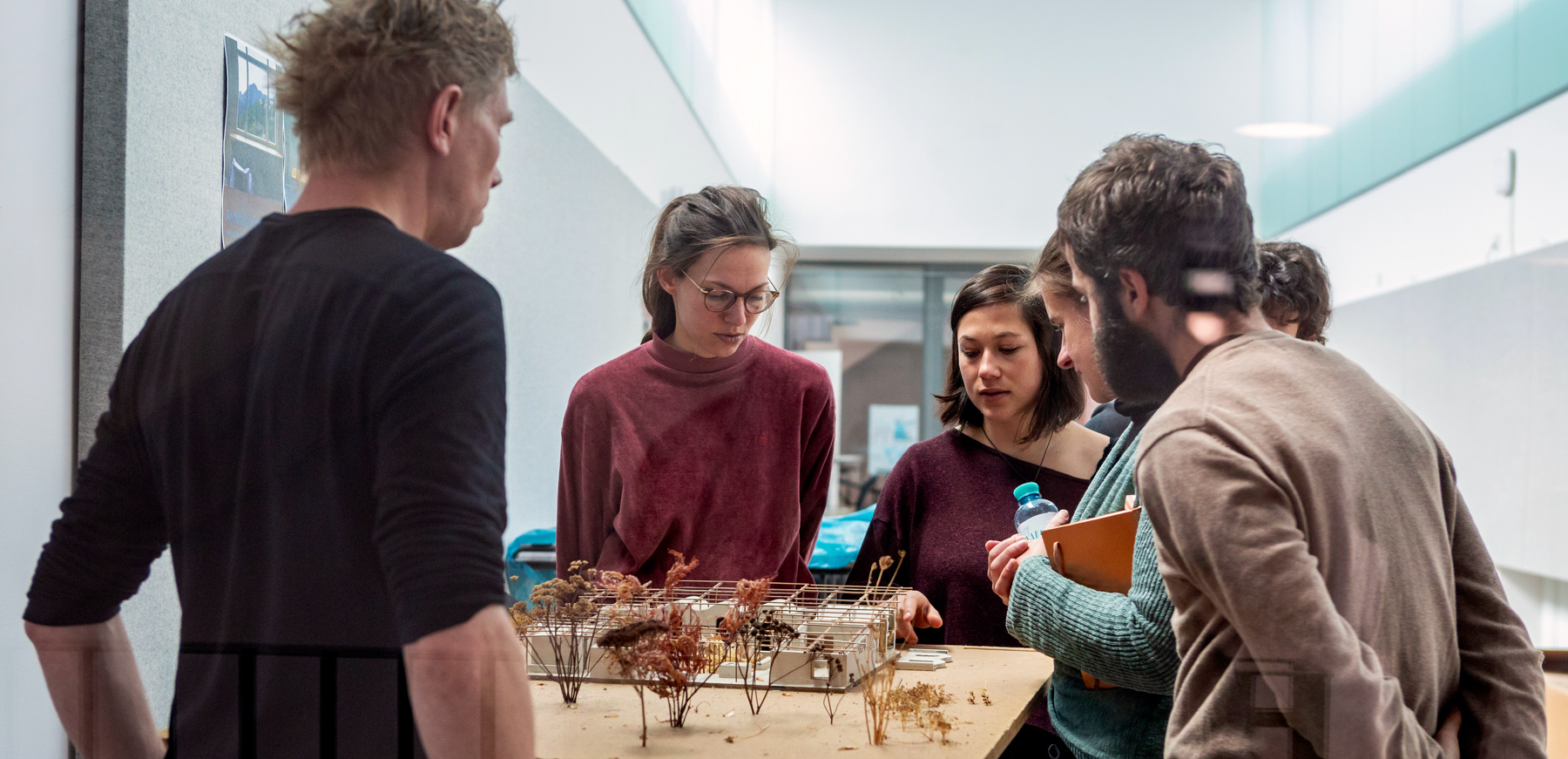

Entrance Examination Master Architektur
Juli 01 + 02, 2024
Online registration: Aug. 01 – Sept. 01, 2023
Sept. 09 + 10, 2024
Online registration: Aug. 01 – Sept. 01, 2024
More about the entrance exam at kunstuni-linz.at
Degree: Master of Architecture
Duration: 4 terms, one of them on an international construction site
Credits: 120 ECTS
Language: German (proof of level B2)
Required Qualification: Bachelor of Architecture, German B2
Note: The Master Architecture | BASEhabitat is an accredited European degree in architecture.
Master Arch BASEhabitat Folder24
The Master Architecture | BASEhabitat is a degree programme at the Department of Architecture at the University of Art and Design Linz. It deals with responsible and sustainable architecture and spatial development in a global context and places particular emphasis on sustainable building materials.
The central element of the programme is the design and implementation of real architectural projects with a social focus. Regenerative building materials such as earth, fibres and bamboo are primarily used. These projects are developed in cooperation with partner NGOs and local communities. Working on the construction site is an essential part of the programme for the students.
» Info about BASEhabitat projects
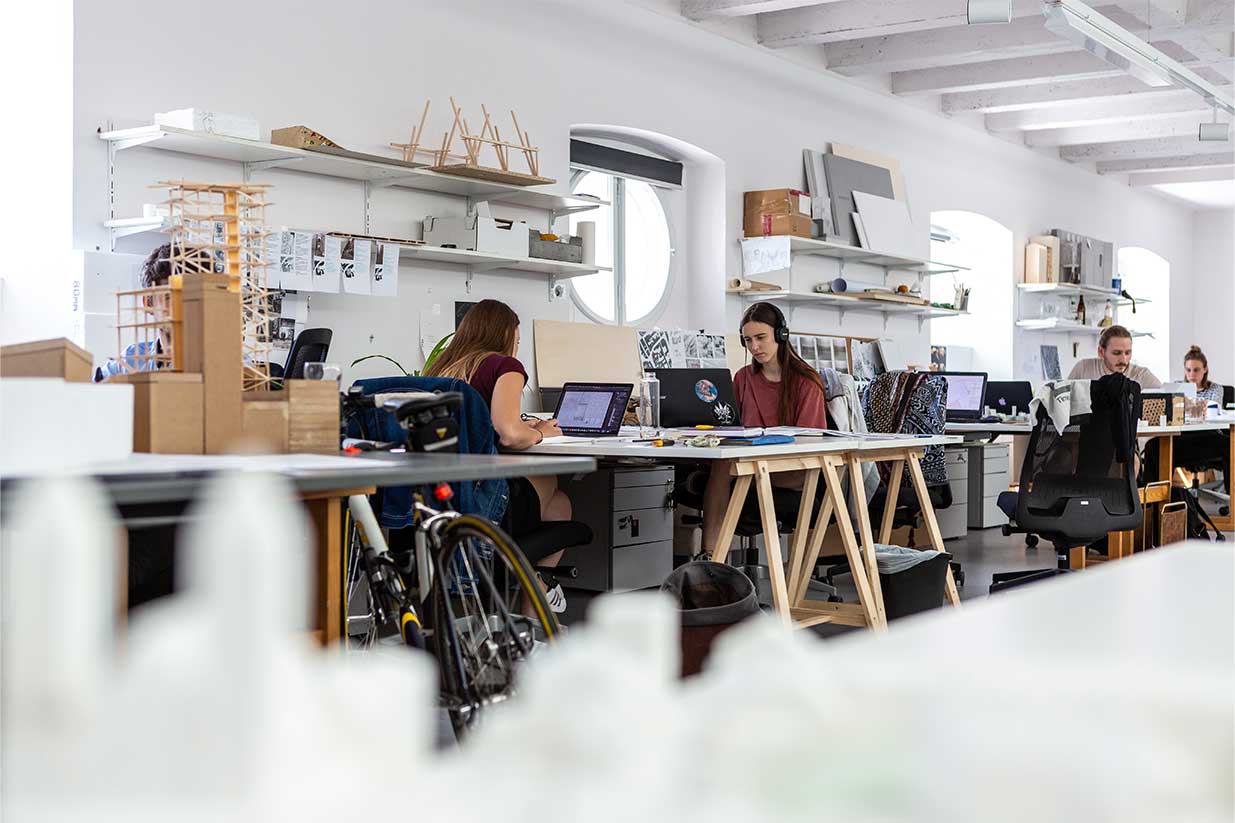
Photo: Stefanie Hueber
The Master | BASEhabitat is linked to the regular masters programme in architecture. As a small school of architecture dealing with pressing questions of our time, die architecture of the University of Art and Design Linz stands for teaching in dialogue and creative work in small groups. Current challenges in architecture are a main part of the study programme.
BASEhabitat has been developing projects in an international context since 2004. Global resonance and numerous prizes and awards, such as the World Energy Globe, confirm the commitment. While originally design, construction and research projects were mainly realised in countries of the global South, Europe is increasingly coming into focus.
BASEhabitat is a member of the UNESCO chair earthen architecture, building cultures and sustainable development and is well-connected with international educational and research institutions. Thanks to its many years of experience, BASEhabitat is also in contact with architects and practitioners worldwide and can thus draw on recognised experts from various disciplines for teaching and research.
With the BASElab and the international Summer School, BASEhabitat works in the field of materials science on regenerative building materials. There is space for practical workshops at the BASElab for testing different materials. At the biannual Summer School on earthen and bamboo construction, lecturers and participants from more than 40 countries work together with BASEhabitat to create a unique workshop atmosphere.
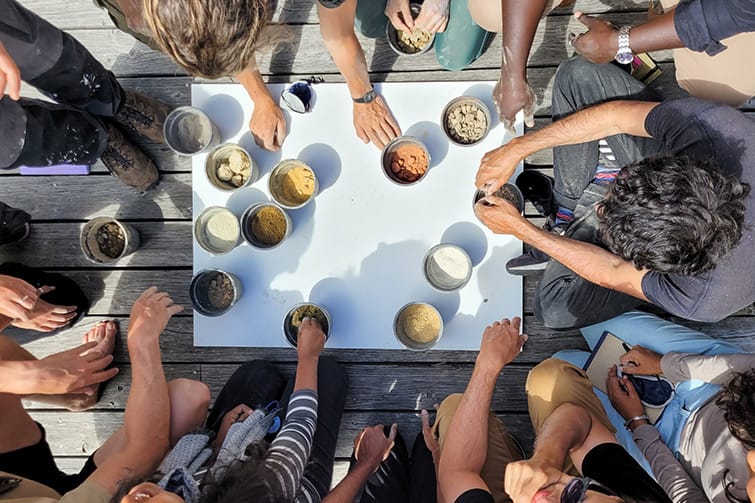
Photo: Marta Rota
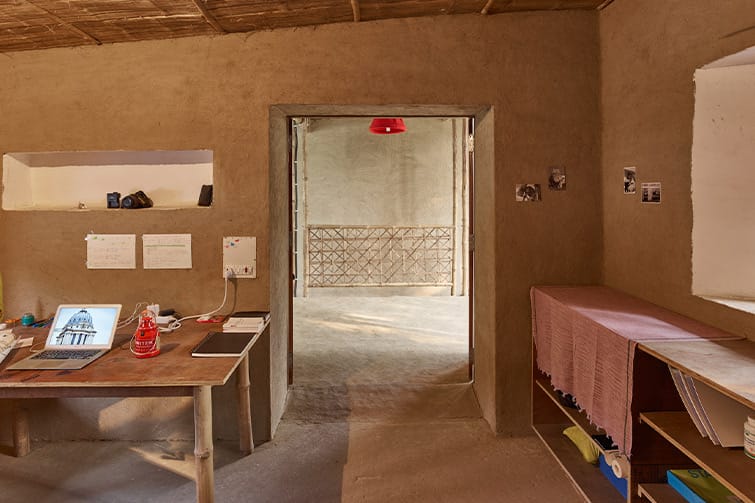
Photo: Kurt Hoerbst
The core elements of the masters degree are project modules (design and construction projects), which are supplemented by competence modules. In addition, students can choose from a pool of optional subjects.
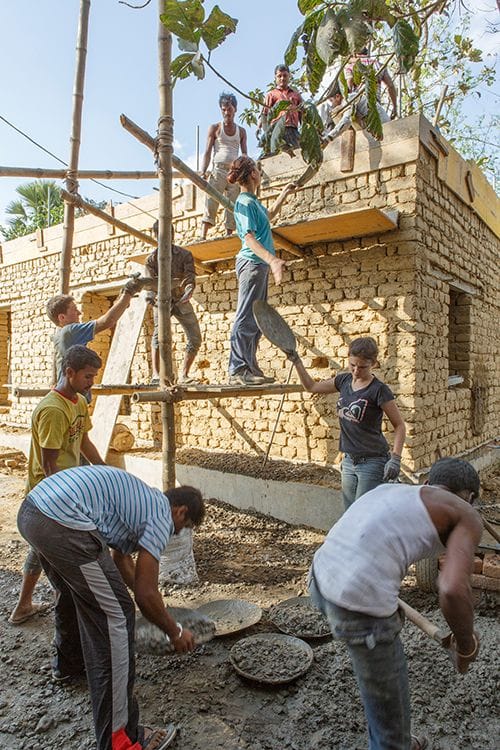
Photo: Stefanie Hueber
The design modules deal with real requests from project partners that are to be implemented.
They are characterised by:
» Examples of design projects: BAAN DOI, LITTLE JOHN’S, BOTSWANA
BASEhabitat Construction Site
A core element in the Master | BASEhabitat is a hands-on term on a BASEhabitat construction site, where students learn to realise designs together with local partners.
Practical experience in the use of tools and building materials, cooperation with craftsmen, problem solving and detailed planning on the construction site are just some of the acquired skills, that are important for future architects. In this way, architecture is taught as a design process in its full complexity.
» Examples of construction projects: CASA BRANCA, BAAN DOI, HAEGI WENDLS

Photo: Stefanie Hueber
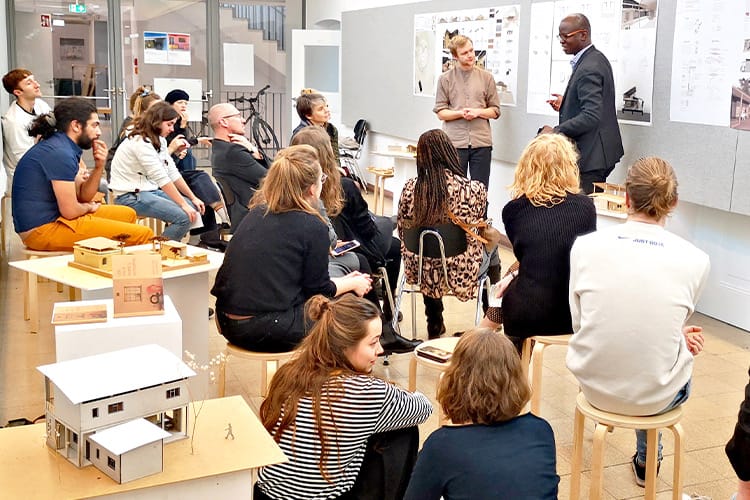
BASE Analysis
… imparts knowledge and skills necessary for the start and implementation of projects. The courses deal with different methods of spatial analysis, across scales, from social to physical spaces, with participatory processes and with the organisation and evaluation of projects.
BASE Habitat
… explores the potential of sustainable building materials in architecture. Lectures will show the variety of regenerative building materials. Some of these materials are tested in a series of practical workshops. The BASElab is an ideal place to learn about different construction methods using earth and other materials such as straw, reed, lime or mushroom mycelium.
BASE Theory
… discusses concepts and theories of architecture and spatial development. The courses range from the various aspects of sustainable architecture to global issues and inclusive design processes. An open lecture series offers input from international guests.
Additionally, students can choose courses at the University of Art and Design Linz and other universities and colleges in Austria, that correspond to their own interests and sharpen their personal profile as a future architect.
The degree programme is completed with a masters thesis, which deals with topics of future-oriented, sustainable architecture. It comprises a theoretical and a practical part.
Das Altern gestalten
Lena Lisbeth Teufl (Diözesankunstpreis 2022)
Ka’akyr
Patrica Jeglitsch (Forschungspreis der Ziviletechniker*innen Österreichs, Triennal de Lisboa 2022)
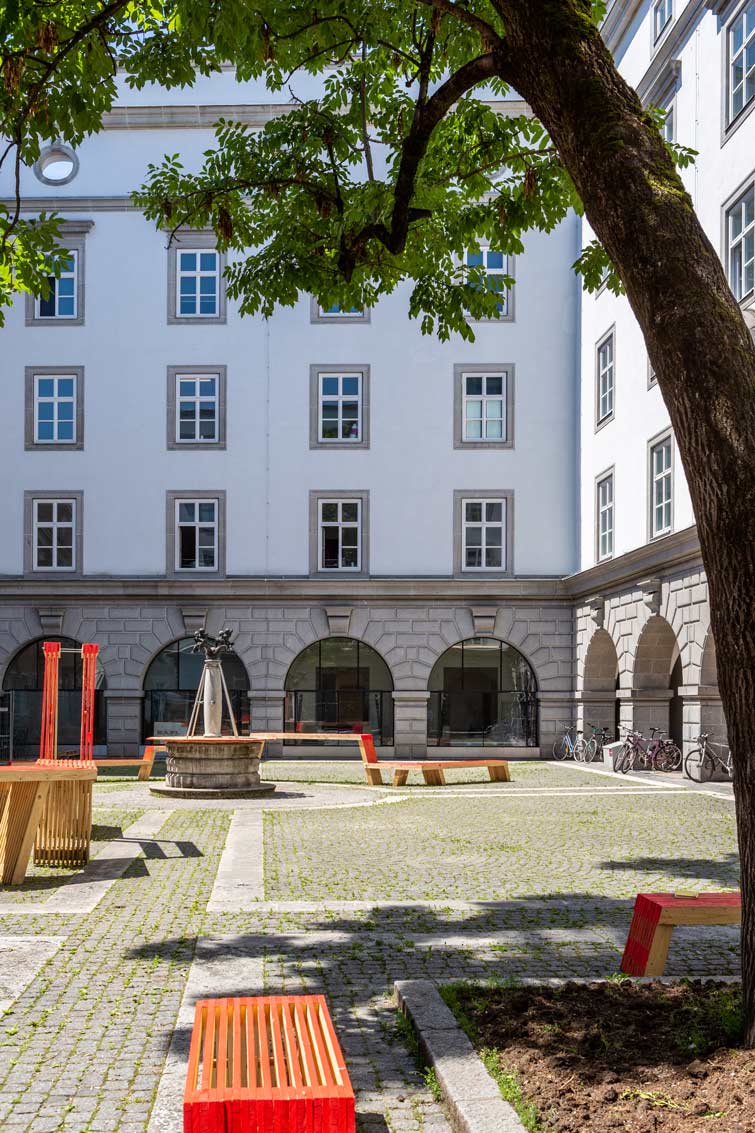
Photo: Stefanie Hueber